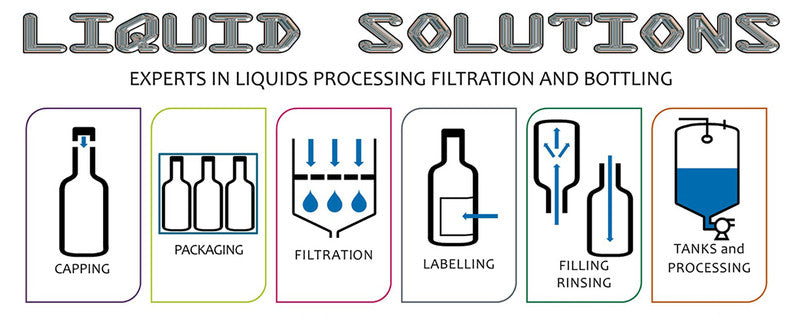Filtration Technology | Is everything crystal clear?
Posted by Beth Evans on

Effective filtration is an integral aspect of the brewing process. Here Pete Arguile, managing director of Liquid Solutions, explains why.
In simple terms, brewers and other drinks producers mix water with solid ingredients which then undergo physical and chemical / biological changes resulting in a cloudy liquid. Clarification of said liquid is usually desired for aesthetical and taste reasons but often also to remove spoilage microbes.
Simple, right? Unfortunately, this is not the case as the range and variability of materials and processes used means it’s nigh-on impossible to specify a suitable filtration regime from the outset, and an element of trial-and-error ‘development’ work is usually required.
We’ve recently fielded enquiries from customers wishing to filter drinks made with gherkins, strawberries, honey, and liquorice (thankfully, not all in the same product!). There’s no reference book telling you how to do this, so it’s down to modifying techniques from more mainstream processes such as beer and wine making, adding a little educated guesswork and borrowing from similar experiences.
We receive ‘complaints’ from customers because their filters have blocked. But that means they’ve done their job! (Removal of solids/haze resulting in a clear liquid). The ‘problem’ is use of inappropriate filtration techniques or the ‘wrong’ media: obviously a kitchen sieve won’t clarify tomato soup, but try putting it straight through a 0.45 micron membrane and you’ll get a tiny amount of perfectly clear liquid plus an expensive blocked filter!
Any filtration method comes with a cost, so to minimize that we recommend using a free resource called ‘Gravity’ where possible Denser-than-liquid particles should fall to the bottom of a tank so the clear-ish liquid above can be drawn off, with less material to filter out. This can be accelerated of course with the use of a whirlpool, or (if you can afford it) centrifuge. Use of finings: isinglass, bentonite etc. also utilises gravity because clumping material into larger particles means they’ll settle faster.
It’s unusual to achieve complete clarity without some filtration, however, so below are some typical methods.
Harder / larger/ fibrous particles are usually best removed using strainers. In this category we have stainless mesh (or better, wedge-wire) which can be cleaned and re-used ad-infinitum, and perhaps bag filters.
Softer particles and hazes require filtration media that do more than simple physical ‘entrapment’. Other mechanisms come into play like electrostatic attraction and inertial impaction: without delving too deep into the physics this means that a 10- micron rated filter will also retain a proportion of 1-micron particles.
The trick is to use media of a type and micron rating that achieve desired clarity without blocking too frequently, as few types are easily cleanable and moving to fine filtration too early in the process will only be frustrating and expensive.
Typically, equipment utilising cheaper media like Kieselguhr, either in powder form or entrained in flat sheets, will be used for primary filtration, moving to more precise and convenient but dearer cartridge filtration at the end of the process.
The former type, and some cartridges, are classed as ‘depth’ filters with wide particle removal range characteristics. At the end of the process, a ‘sterile’ membrane filter is often specified, with ‘industry standard’ rated at 0.45 microns. These are pretty much 100% effective at removal of all spoilage yeast and bacteria (specification is to pass less than one in ten trillion) but are sensitive beasts and easily blocked so require tight prefilters to protect them.
At this level, we are concerned not only with discrete ‘particles’ but also long-chain molecules and polymers. Different media like polypropylene, glassfibre or nylon may be most effective, depending on what material is present, but sometimes filter blockage problems persist and must be addressed further back in the process, with the use of enzymes for example to break down long-chain ‘gummy’ molecules like beta glucans.
It’s all a far cry from student days when all we used to filter our home brew was a muslin cloth ( or sometimes, ladies tights!) but market expectations mean rigorous and effective filtration is usually necessary, to give protection from spoilage / long shelf life, and of course the sparkling clarity that consumers have come to expect.
Share this post
- Tags: Brew, Brewing, Filter, Filtration, Technology
